Overview:
The article provides a comprehensive step-by-step guide on how to effectively use an A1C calculator app for diabetes management, emphasizing the importance of regular monitoring of A1C levels. It supports this by detailing the process of downloading the app, inputting glucose data, calculating A1C, and tracking progress, all of which are crucial for maintaining better blood sugar control and preventing complications associated with diabetes.
Introduction
Understanding A1C levels is essential for effective diabetes management, as it serves as a key indicator of long-term blood sugar control. This article delves into the significance of A1C testing, shedding light on its implications for individuals diagnosed with diabetes, particularly Type 2. With the increasing prevalence of diabetes, monitoring A1C levels has become more critical than ever.
The discussion will cover:
- Practical steps for using A1C calculator apps
- The importance of regular testing
- How technology can enhance diabetes care
Additionally, common misconceptions surrounding A1C will be addressed, providing clarity on how to interpret results and make informed health decisions. Through this comprehensive exploration, readers will gain valuable insights into managing their diabetes effectively.
Understanding A1C: What It Is and Why It Matters
A1C, also referred to as glycated hemoglobin, is an essential test that indicates your average sugar levels over the past two to three months. It is reported as a percentage, where a higher percentage signifies poorer blood sugar control. For individuals diagnosed with the condition, maintaining an A1C level below 7% is frequently recommended to mitigate the risk of complications associated with it.
Significantly, Type 2 conditions represent 90–95% of all cases, emphasizing the importance of effective A1C oversight in this group. According to Cheryl D. Fryar, M.S.P.H., 'the age-adjusted prevalence of total and diagnosed conditions related to blood sugar increased between 1999–2000 and August 2021–August 2023,' underscoring the urgency for patients to monitor their A1C levels closely.
For newly diagnosed individuals, T2DSolutions acts as a complete resource center, providing access to: - The CDC's National Diabetes Prevention Program - Informative articles - Support groups - An A1C calculator app for monitoring A1C levels
These resources offer assistance and direction for effective health strategies.
Comprehending your A1C results is essential not only for assessing your overall health control but also for enabling necessary lifestyle changes that can result in better health outcomes. T2DSolutions stands out by providing a community-focused platform that encourages engagement and shared experiences among users. Subscribe to T2D Solutions to remain informed about the latest resources and community support available for Type 2 and Type 3 Diabetes care.
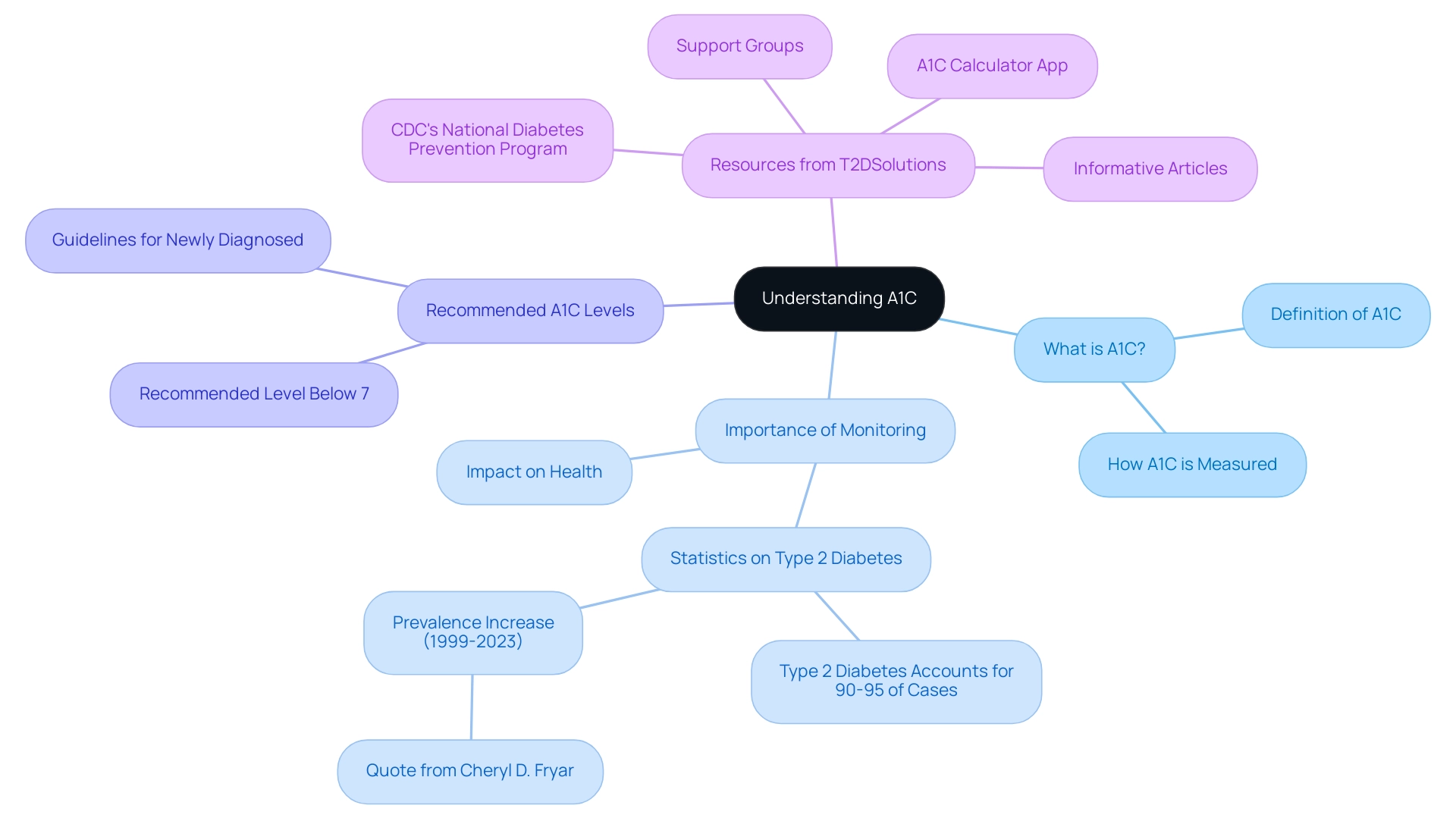
Step-by-Step Guide to Using an A1C Calculator App
-
Download the A1C calculator app: Begin by selecting and downloading a reputable app from your device's app store that serves as an A1C calculator. Prioritize apps that have received positive reviews and include user-friendly interfaces, ensuring ease of use during your diabetes care journey. Popular applications such as DiabetesConnect, which boasts an impressive Apple rating of 4.7 and an Android rating of 4.4, exemplify high user satisfaction.
-
Input Your Data: Once the app is installed, open it and proceed to enter your glucose readings. Many contemporary apps allow for direct input from glucose meters, streamlining the data entry process. If accessible, include your average glucose levels to provide a comprehensive overview of your glucose management. Remember, effective blood glucose monitoring (BGM) is a crucial element of managing this condition.
-
Calculate Your A1C: After entering the necessary data in the A1C calculator app, locate and tap the 'Calculate' button. The app will analyze your input and generate an estimated A1C level, which is essential for assessing your long-term glucose control.
-
Review Your Results: Carefully review your A1C percentage and any supplementary insights the app may provide, such as personalized recommendations for improvement. Understanding these results is crucial, and consulting with your certified health educator can help ensure the tools you are using are appropriate and correctly employed. As expert Ilkowitz advises, walking through your apps with your educator is important for effective management of the condition.
-
Track Your Progress: Utilize the app's tracking features to monitor fluctuations in your A1C over time. By frequently refreshing your information, you can recognize patterns and make informed choices concerning your health oversight, ultimately improving your well-being. Effective tracking is supported by case studies, such as those involving the Under my Fork app, which has been clinically validated to improve 'time in range' through continuous glucose monitoring and meal tracking.
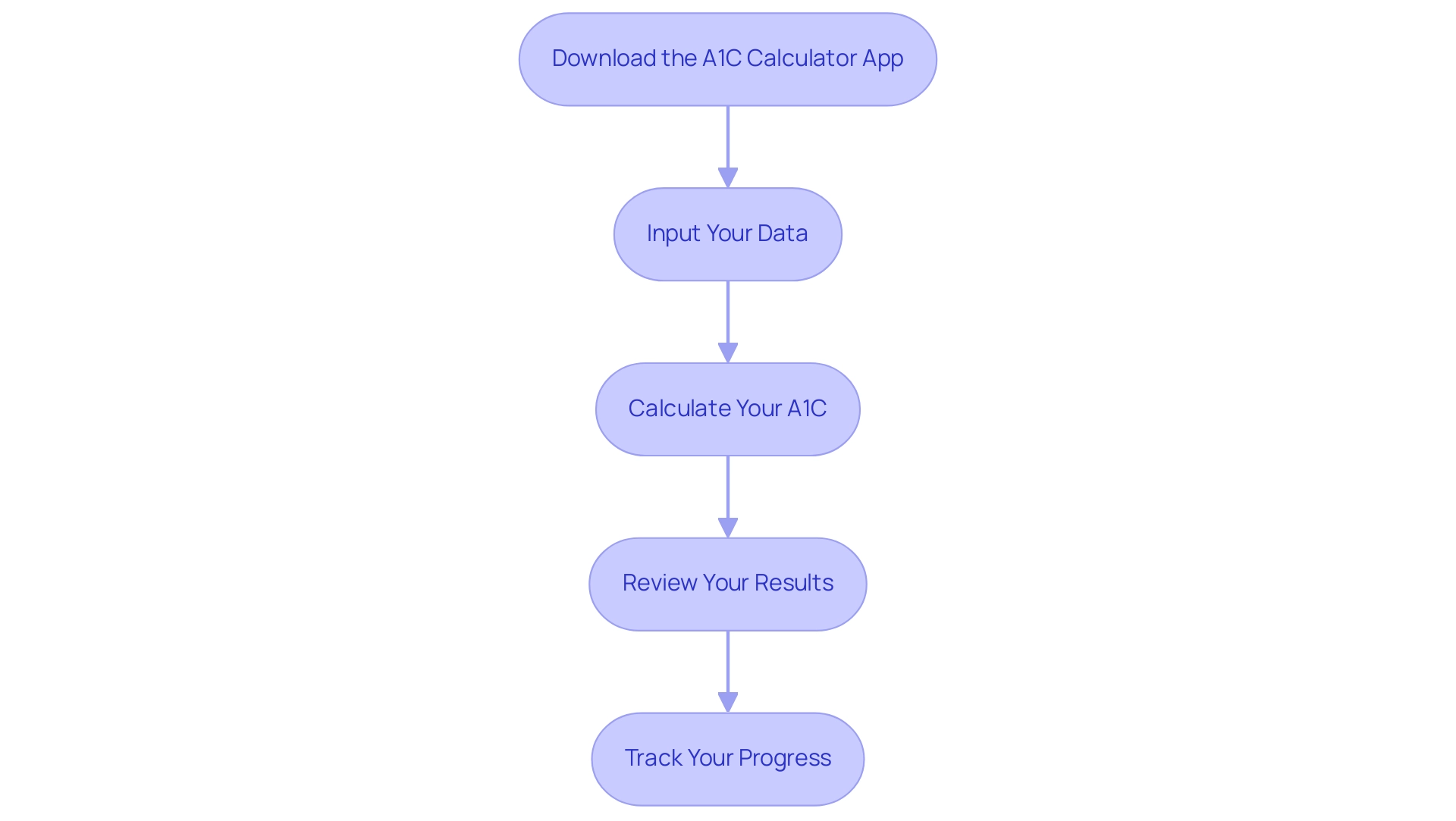
The Role of Regular A1C Testing in Diabetes Management
Regular A1C testing, facilitated by an A1C calculator app, plays an essential part in the oversight of blood sugar levels, providing a comprehensive view on glucose regulation over prolonged durations. T2DSolutions, launching soon, is dedicated to being your all-encompassing resource for managing this condition, especially for those newly diagnosed. We encourage you to subscribe to stay updated and receive emails when new content is published.
Current guidelines suggest that individuals with well-managed blood sugar levels should undergo A1C testing at least twice a year. Conversely, those whose treatment has changed or who are struggling to meet their glycemic targets may require testing every three months. This frequency is vital as it allows healthcare providers to detect trends in blood sugar levels and make timely adjustments to treatment plans and lifestyle modifications, ultimately preventing potential complications.
According to specialists in blood sugar control, consistent monitoring through an A1C calculator app is foundational for effective health oversight. As one expert states, 'Regular A1C testing is essential to understanding how well a patient is managing their condition and to preventing long-term complications.' The latest research emphasizes the correlation between regular testing and improved patient outcomes, indicating that patients who utilize an A1C calculator app to adhere to testing recommendations achieve significantly better glycemic control.
This emphasizes the importance of this practice in the ongoing oversight of blood sugar disorders, particularly considering that Type 2 is linked to insulin secretory defects affected by genetic predisposition, inflammation, and metabolic stress. With T2D Solutions, you will gain access to vital tools and community assistance to improve your health journey.
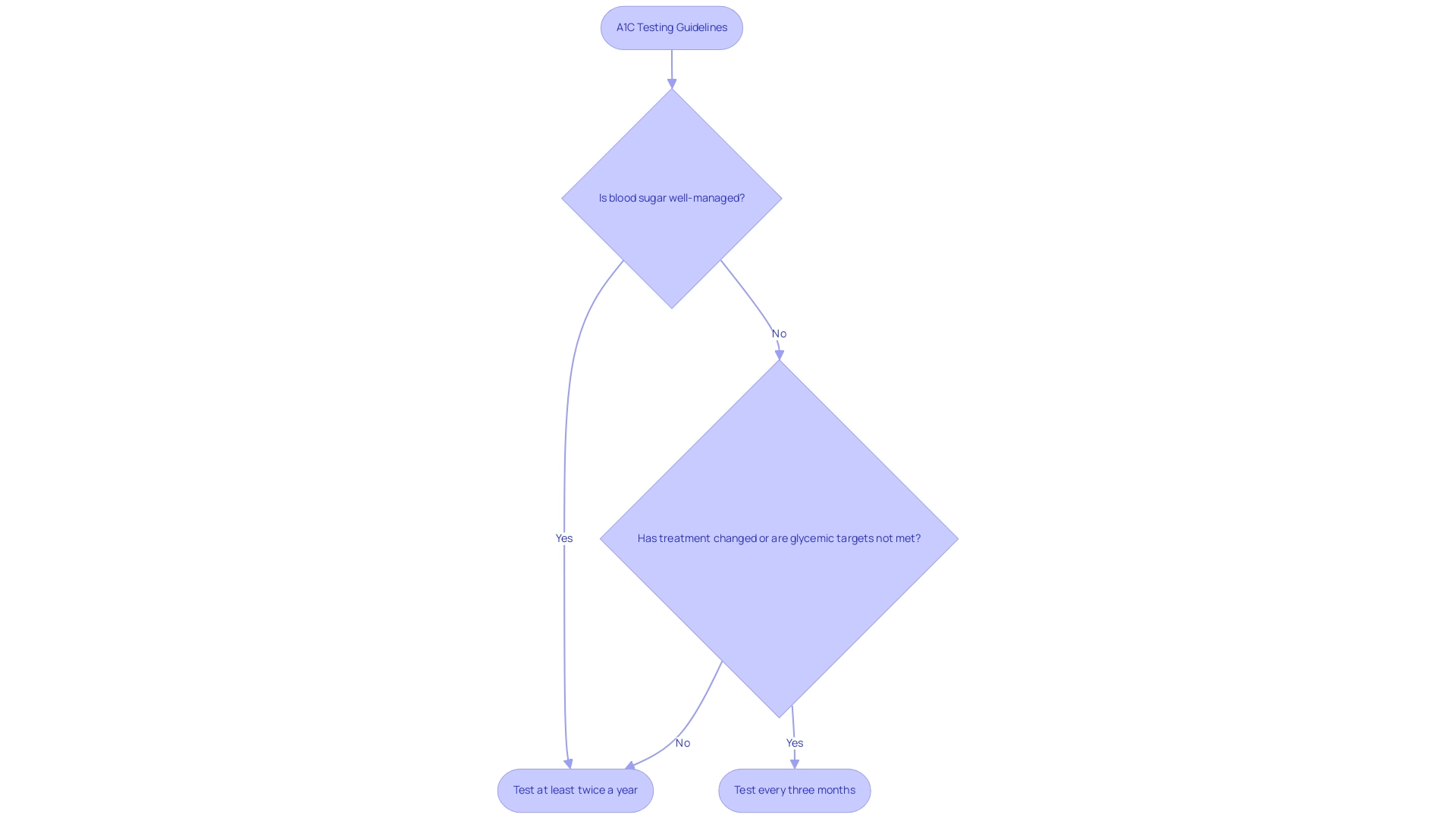
Leveraging Technology for Effective Diabetes Management
As we launch T2DSolutions, a new comprehensive resource hub for Type 2 and Type 3 diabetes education and community support, it's important to highlight the pivotal role technology plays in diabetes management. Our platform will provide essential tools, including an a1c calculator app and glucose calculators, that facilitate the tracking and monitoring of health metrics. These calculators, such as the a1c calculator app, will be integrated into T2D Solutions, featuring reminders for blood sugar testing, meal and medication logging capabilities, and visual graphs that display trends over time.
These tools empower users to gain a deeper understanding of their health status, enabling informed choices regarding their condition care. Furthermore, the integration of continuous glucose monitoring (CGM) systems has been underscored by Wilmot and colleagues, who emphasize that CGMs deliver glycaemic benefits for both insulin- and non-insulin-treated individuals with type 2. The AiDAPT trial supports this, demonstrating an adjusted difference in time-in-range percentage (Tip) of 10.5% (95% CI = 7.0-14.0; p < .001) between the AID group and the control group, highlighting the effectiveness of technology in treating blood sugar conditions.
Additionally, applications like Simplera Sync will allow users to share insulin and glucose data with healthcare providers and family through the CareLink Connect app, enhancing collaborative care. However, it is crucial to be aware of potential challenges, such as the interference of medications on CGM accuracy, as highlighted in the case study regarding sensor interference from substances like hydroxyurea and mannitol. T2DSolutions will offer assistance on these challenges to help users handle their condition effectively.
As we transition into 2024, T2D Solutions, created by the committed T2D Solutions Content Team, will keep evolving with advancements in health technology, improving user engagement and promoting better health outcomes.
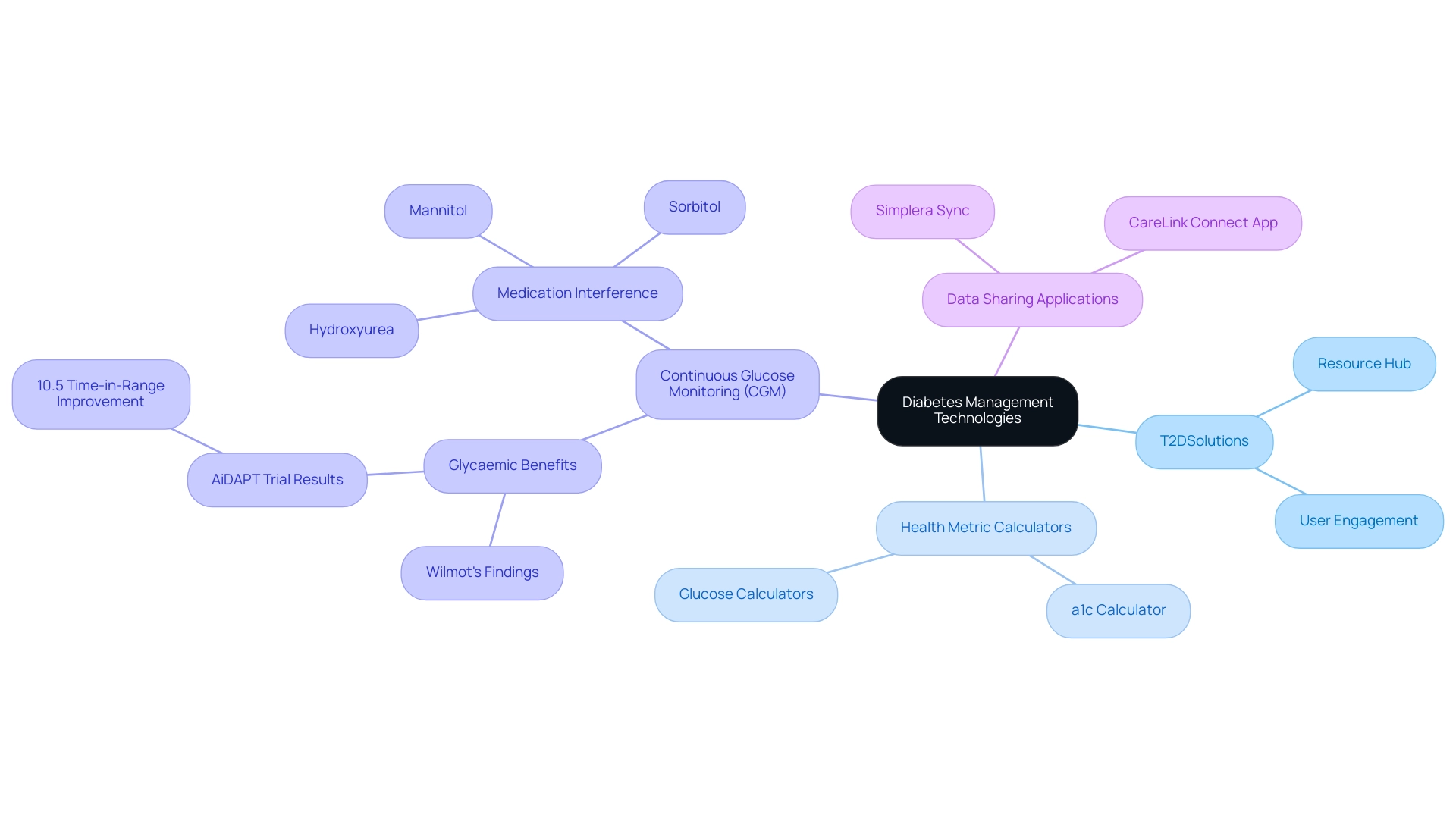
Common Misconceptions About A1C Levels and Their Implications
A significant number of individuals hold misconceptions regarding the importance of A1C levels in managing blood sugar, which can be addressed by using an A1C calculator app. A widespread misconception is the belief that a single elevated A1C result indicates a failure in blood sugar management. In reality, the A1C calculator app reflects the average blood glucose levels over a span of two to three months, making it crucial to focus on long-term trends rather than isolated results.
Furthermore, there is a common notion that only those using insulin need to monitor their A1C levels. However, it is essential for all individuals diagnosed with this condition to regularly evaluate their A1C levels with an A1C calculator app to facilitate effective disease control. Misunderstandings of A1C significance can result in poor health choices, as emphasized in the 'Diabetes Knowledge and Beliefs Survey,' which discovered that widespread inadequate knowledge and beliefs about the condition obstruct optimal disease control.
The survey, which involved a robust response rate of 87%, underscores the necessity for educational interventions aimed at enhancing self-management skills among individuals living with the condition. As David B. Sacks from the Department of Laboratory Medicine at the National Institutes of Health states, this position has been endorsed by the American Diabetes Association (ADA) and emphasizes the importance of understanding A1C levels. By grasping the nuances of A1C testing and its implications, individuals can use an A1C calculator app to make informed health decisions that contribute to better control of their condition.
At T 2 Solutions, we are committed to enhancing control of blood sugar levels through comprehensive education, community support, and innovative resources specifically designed for individuals with Type 2 and Type 3 conditions. Our upcoming resources, including the A1C calculator app and blood sugar calculators, will soon be available on our blog, where you can find the latest articles and updates to support your diabetes management journey.
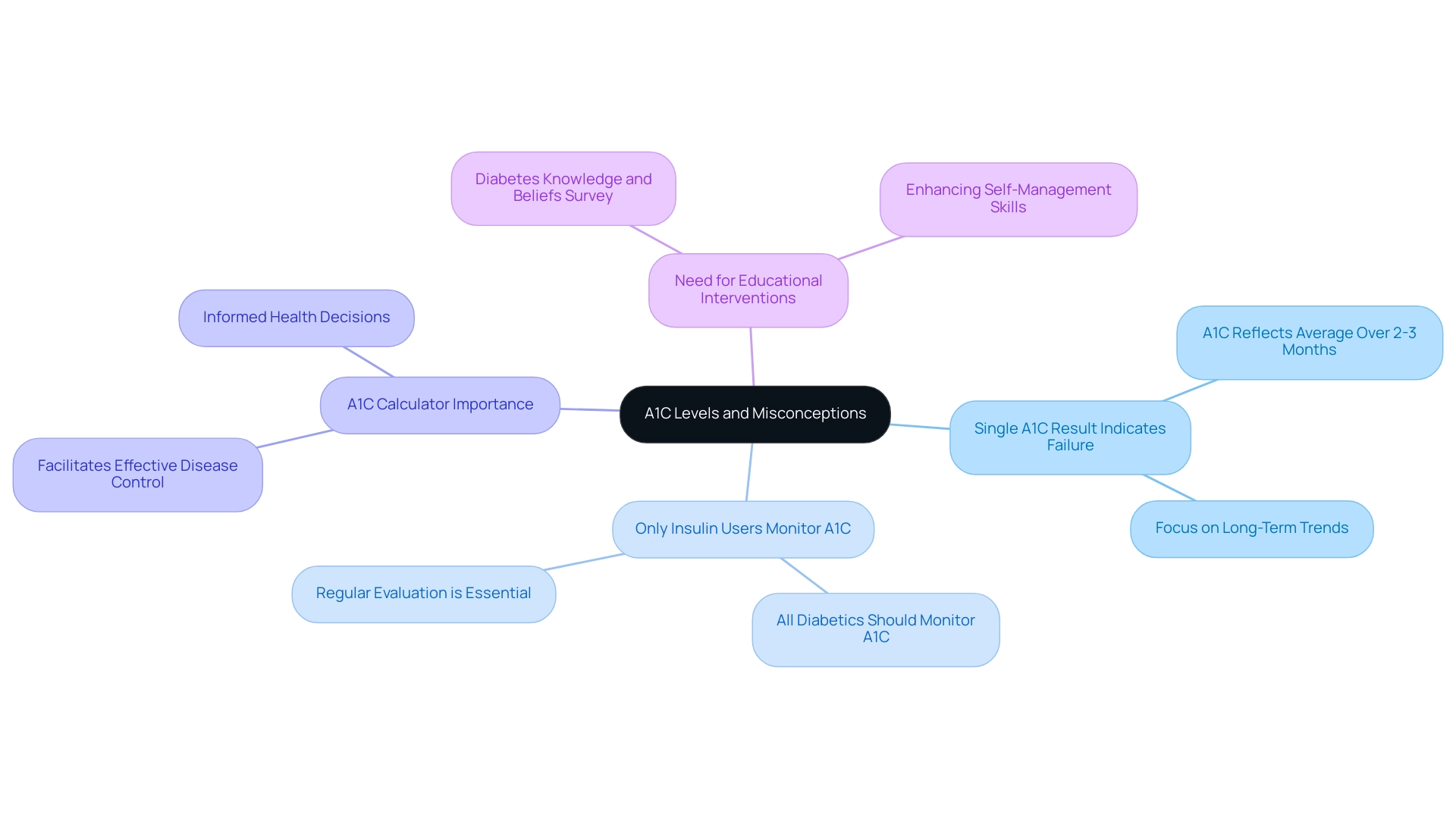
Conclusion
Understanding and managing A1C levels is crucial for individuals living with diabetes, particularly Type 2 diabetes. As highlighted throughout the article, A1C serves as a key indicator of long-term blood sugar control, reflecting average glucose levels over the previous two to three months. Regular A1C testing not only aids in monitoring diabetes management but also empowers individuals to make informed lifestyle changes that can significantly improve health outcomes.
The implementation of technology, such as A1C calculator apps and continuous glucose monitoring systems, further enhances diabetes management by providing users with accessible tools for tracking their health metrics. As these technologies evolve, they offer valuable support in identifying trends and making timely adjustments to treatment plans. Furthermore, dispelling common misconceptions about A1C levels can lead to a better understanding of diabetes management, encouraging individuals to focus on long-term trends rather than isolated results.
In conclusion, embracing a proactive approach to A1C management through regular testing, utilizing technology, and fostering a solid understanding of A1C implications is essential for achieving optimal health outcomes. With resources like T2DSolutions on the horizon, individuals will have the support and tools necessary to navigate their diabetes management journey effectively. Prioritizing A1C monitoring is not merely a guideline; it is a fundamental aspect of living well with diabetes.



